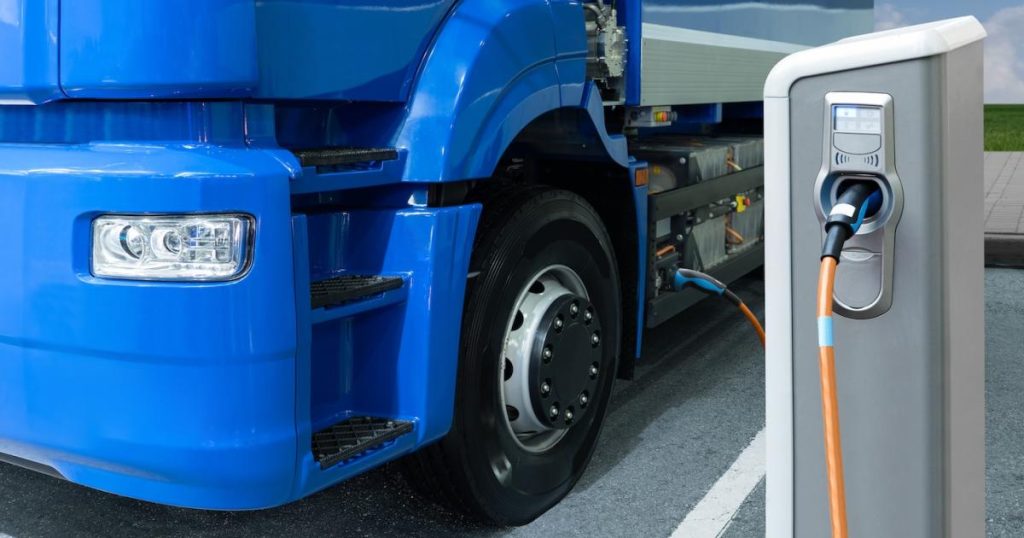Listen up, utilities: The EV industry is telling you what it needs
5 min read
Key electric vehicle (EV) industry stakeholders convened during several workshops and sessions at VERGE 23 to discuss how to advance fleet electrification. Here are three concepts and solutions shared during the event.
Permitting, utility gridlocks and charging equipment
Whether it was during the three-hour tutorial Fleet Electrification: Best Practices for Effective Adoption, the session Charging Depots: Meeting Fleets in the Moment, or the two-hour workshop Bypassing Roadblocks To Zero Emissions Trucking: A Medium- and Heavy-Duty Fleet Decarbonization Workshop, discussions on the single greatest barrier to advancing fleet electrification focused on charging.
Access to power, permitting approval delays and fleets getting their hands on infrastructure equipment within reasonable timelines were the talk of VERGE as everyone races to electrify their operations.
To that end, several individuals and groups proposed some interesting solutions to the problem:
- Frank Reig, CEO and co-founder of Revel, proposed the solution of utilities prioritizing EV charging deployments and moving those projects to the front of the utility queue to accelerate project deployments. Reig said that such a policy shift would have an even larger impact than any policy action from the Inflation Reduction Act or Infrastructure Investment and Jobs Act — both notable federal achievements from the Biden administration.
- A breakout table led by Noelani Derrickson, senior policy advisor at Tesla, produced some insightful thoughts about needing more collaboration between fleets and utilities to deploy charging assets that can serve more than one fleet. This concept of shared charging could help alleviate the burden of everyone going after their own deployments, which lessens the availability of power and infrastructure assets. Along those lines, the group suggested standardizing utility equipment such as switchgear, transformers and more to help speed up the deployment process.
- A breakout table led by John Crum, managing director, Commercial Vehicle Group of Wells Fargo, also identified the need for more industry awareness about getting started as early as possible with utilities. Additionally, manufacturers should partner with financial institutions to share the residual risk of deployments.
- Henrik Holland, global head of Prologis mobility at Prologis, shared his one wish to accelerate EV deployments by VERGE next year, and — you guessed it — it was about charging. Holland said utilities need to provide more transparency around deploying charging assets and where companies are in the utility queue. He shared that from a business perspective, it’s hard to engage customers if they don’t know what’s happening with project sites.
Perfection is the enemy of good
Another common theme discussed: Just deploy. Deploy whatever you can, and start small — 1-3 EV trucks, 1-2 chargers, and grow it from there.
During a tutorial breakout table discussion led by Black & Veatch, the conversation focused on how smaller fleets benefit from adopting electrification early — especially for heavy-duty trucks. For instance, electrifying fleets allows companies to take advantage of current financial incentives in addition to simply being ready to meet stricter emissions regulations.
But beyond that, at this point in the electrification journey, without getting started, you face the risk of becoming a Blockbuster in a Netflix world — obsolete.
Additionally, in the fleet space, the total cost of ownership is a main driver of electrification but cost parity is good enough — a point Josh Green, founder and CEO of Inspiration Mobility, shared during the tutorial. “The grass is green enough now,” Green said to the audience.
“Many companies are taking an expensive wait-and-see approach to electrifying their fleet, even though viable EVs are available today and cost-effective charging systems can be deployed quickly,” Green shared via email with me after VERGE. “Tutorial participants discussed that the proliferation of vehicle and charging options can create confusion, which leads to inaction and delays. At Inspiration, we call that the ‘Electrification Action Gap’, when companies get stuck in a permanent pilot project and end up forgoing millions of dollars in savings by keeping higher-cost gas and diesel vehicles on the road.”
During the tutorial, Inspiration Mobility provided an example assessment they conducted on a nationwide fleet, something it calls EV Opportunity Assessment. It reviewed a nationwide fleet of 3,300 fleet vehicles, including SUVs, minivans, light-duty trucks and home-based sedans, and found that 3,200 of 3,300 vehicles could immediately be transitioned from gas or diesel to electric. In addition, the transition would save $32.8 million in savings over a six-year vehicle lifecycle and an estimated 9.4 metric tons of CO2 annually per vehicle.
The need for more case studies and success stories
Whether it was Sysco’s breakout table led by Tracey Anderson, senior director, supply chain sustainability, or NACFE’s table led by executive director Mike Roeth, the consensus among leaders working on fleet electrification was the need for more industry sharing.
In this race to decarbonize fleets, companies must be more willing to share their success stories along with their failures, and highlight progress. NACFE’s Run on Less Electric Depot is a prime example of that. Maaz Haider, manager, electric truck transition at EDF+Business and co-facilitator of a medium- and heavy-duty fleet electrification workshop, provided some further context to me on the value of collaboration via email after the workshop ended:
“My most profound insight from the workshop was the critical importance of fostering synergy between policy, technology, and innovative business models to facilitate a truly effective and impactful transportation transition. While we have initiatives like the Bipartisan Infrastructure Law (BIL) and the Inflation Reduction Act (IRA) spearheading advancements in electrification, it is evident that outdated regulations, remnants of a bygone era, present significant barriers to the widespread adoption of zero-emission solutions. Issues like the Federal Excise Tax on trucks, parking considerations, and commercial restrictions for rest stops need to be resolved rapidly. Therefore, it is crucial for the private sector to proactively engage in transparent information sharing, not only highlighting its successes but also openly highlighting challenges at all levels. By doing so, pertinent stakeholders can collaboratively work to resolve these issues, thus alleviating and accelerating the transition bottlenecks.”
With all that said, I’ve never felt more hopeful in this transition than I do now. I know by the next VERGE, we will be in a very different place in the industry, both having progressed even further in fleet electrification and with it, unlocking new challenges to overcome. But one thing is clear: We will solve those challenges, just like we’ve solved the ones before it.





